Fruits that start with A are diverse, ranging from sweet and juicy to tart and nutty. They include widely loved options like apples, crisp texture, and avocados, which are known for their creamy flesh and are used predominantly in salads and guacamole.
These A-head food items vary in taste from the sugary sweetness of apricots to the unique tang of açaí berries.
In terms of use, some, like almonds, are eaten raw or added to dishes for a crunchy texture, while others, such as apricots, are commonly used in jams, desserts, or dried for snacking.
Apart from exploring the collection of fruits that start with A, I will also explore some vegetables that begin with A.
Let’s get started!
41 Fruits that Start with A with Filters
Here’s a list of 41 fruits starting with A, organized by how popular they are. You can also filter them to see which ones are national, which ones are exotic, which can be eaten as veggies, and which are great for cooking, drinks, or adding a special touch to your meals.
Apple
- Argentina
- Austria
- Belgium
- Bulgaria
- Germany
- Netherlands
- Poland
- Portugal
- Romania
- Russia
- South Korea
- Sweden
- Switzerland
- United Kingdom
- For Beverages
- For Dishes
- For Garnish
- National
Apple is a pomaceous fruit primarily cultivated for its sweet or slightly tart flavor. Widely recognized for its smooth, firm skin that varies in color from green to red and yellow, apples are native to Central Asia but have been grown in Asia and Europe for thousands of years.
Today, they are cultivated worldwide, with China, the United States, and Poland being top producers. Apples come in numerous varieties, including ‘Granny Smith,’ ‘Red Delicious,’ ‘Fuji,’ and ‘Gala.’
Apple’s taste ranges from sweet to tart. They are typically harvested in the fall. This fruit can be consumed raw, with or without its peel, or cooked into pies, sauces, and salads.
Their popularity spans globally, with a strong cultural presence in American and European cuisines, notably in the American apple pie tradition.
Avocado
- Mexico
- For Dishes
- For Garnish
- Fruit Vegetables
- National
Avocado is a large berry with a single large seed, creamy texture, and rich, nutty flavor. It is indigenous to the Americas, thriving in Mediterranean and tropical climates.
Famous variations include ‘Hass,” which has dark, pebbly skin, and ‘Fuerte,” renowned for its smoother, green skin. Avocados are primarily harvested in the spring and summer but can be found year-round due to different growing regions.
The fruit’s rich, buttery flesh is typically eaten raw, scooped directly from the skin, or used in salads, sandwiches, and the famous dip, guacamole. Avocados grow predominantly in Mexico, the United States (California and Florida), and South America.
Almond
- For Dishes
Almond is the edible seeds of the almond tree, hailing from Iran and surrounding countries. These seeds are adored for their light, buttery flavor, and crunchy texture.
Almonds are a versatile addition to many dishes or enjoyed as a healthy snack. You can find almonds in various forms, such as whole nuts, slivered, or flour.
Almond milk is a popular plant-based milk that combines water and filtered almonds. With its watery texture and nutty flavor, it can easily adapt to many cooking recipes besides being a simple drink.
Apricot
- Armenia
- For Beverages
- For Dishes
- National
Apricot is a stone fruit or drupe from China that later spread to Armenia and the Mediterranean. It has been cultivated for over 3,000 years across different climates, though it thrives in temperate regions.
The fruit is now widely grown in Turkey, Italy, Russia, and the United States, particularly California. Apricots are round to oval, with a golden-yellow to orange hue, sometimes with a red tinge on the side most exposed to the sun.
They’re enjoyed fresh or dried and are used in various culinary applications, from jams and jellies to apricot brandy and desserts. Popular apricot varieties include ‘Blenheim,’ ‘Moorpark,’ and ‘Gold Kist.’
Asian Pear
- For Beverages
- For Dishes
- For Garnish
Asian pear, also known as nashi pear, is a type of pear indigenous to East Asia. It’s distinct from European pears due to its round shape, crisp texture, and the fact that it’s often eaten raw like an apple.
This fruit is widely cultivated in Japan, Korea, and China. Asian pears come in several varieties, such as ‘Hosui,’ ‘Niitaka’, and ‘Shinseiki’, with their flavor profile ranging from sweet to slightly tart.
They have a crunchy texture and a water content higher than traditional pears. The skin can range from green to yellow to brown, and they are typically larger than their European counterparts.
Asian pears are mainly consumed fresh, often peeled and sliced, and are also used in salads for a crunchy texture.
Açaí
- Exotic
- For Beverages
Açaí, a small, dark purple fruit, is harvested from the açaí palm from South America. This berry is typically found in the Amazon basin, most notably in Brazil, where it’s a staple food.
The fruit taste is often described as a blend of berries and chocolate. Due to its perishable nature, açaí is commonly consumed as a pulp in smoothies, bowls, and juices. Within the Amazon, açaí is eaten naturally or as a dish mixed with tapioca and sometimes fish.
Its popularity has spread globally, especially in North America, Europe, and Asia. The annual Açaí Festival in Pará, Brazil celebrates this fruit’s harvest and cultural significance.
Apple Banana
- Exotic
- For Beverages
- For Dishes
Apple banana, or Manzano banana, is a small, stubby fruit from the broader banana family. Native to Southeast Asia, this fruit is now grown in several tropical regions worldwide, including Central and South America.
Distinguished by its sweet flavor with hints of apple and strawberry, the apple banana is favored for its creamy texture, which is firmer and less mushy than its more widespread cousin, the Cavendish banana.
When ripe, its skin turns deep yellow with black spots, and its flesh remains creamy white. People often enjoy Apple Bananas fresh out of hand, in fruit salads, or as a dessert ingredient. They are especially popular in Latin America and the Caribbean cuisines.
Apple Guava
- Exotic
- For Beverages
- For Dishes
Apple guava, commonly called Guava, is a tropical fruit from Mexico, Central America, and northern South America. Recognized by its green skin and pink or white flesh, this fruit is a staple in the diets of its native regions but is considered exotic in temperate zones.
Guava’s flavor combines the essences of pear, quince, and fig and is often eaten raw, juiced, or used in cooking for sweet and savory dishes. The fruit has several varieties, such as ‘Pink,’ ‘White,’ and ‘Red,’ differing mainly in the color of the flesh and its sweetness level.
They have found a place worldwide, especially in jams, jellies, and pastries.
Arancia Rossa di Sicilia
- Exotic
- For Beverages
- For Garnish
Arancia Rossa di Sicilia, also known as the Blood Orange of Sicily, is a citrus fruit originating from Italy, specifically the region of Sicily. This fruit is celebrated for its deep red flesh due to the anthocyanins present, uncommon in other citrus fruits.
Blood oranges are prized for their sweet and slightly tart flavor, with raspberry-like undertones. They are typically in season from December through. The most famous variations of Blood Orange include ‘Tarocco,’ ‘Moro,’ and ‘Sanguinello.’
These oranges are eaten fresh and used in various culinary creations, from salads and desserts to juices and cocktails. They are particularly popular in Italy and have gained international recognition.
The European Union has granted the Arancia Rossa di Sicilia Protected Geographical Indication (PGI) status.
Arancia di Ribera
- Exotic
- For Beverages
- For Garnish
Arancia di Ribera, known as the Ribera Orange, is another citrus gem from Sicily, Italy. Unlike the Arancia Rossa, the Ribera Orange boasts bright orange skin and flesh, and it is famous for its high vitamin C content and juicy, sweet flavor with no bitter aftertaste.
This fruit is harvested from late February to May, thriving in the sun-drenched valleys near Ribera in the Agrigento province. The Ribera Orange has achieved Protected Designation of Origin (PDO) status.
Andean Blackberry
- Exotic
- For Beverages
- For Dishes
Andean blackberry, or mora de Castilla, is a blackberry indigenous to the Andean regions of Colombia, Ecuador, Venezuela, and Peru. This fruit is distinct from the common blackberry, offering a unique combination of tart and sweet flavors.
The Andean Blackberry is smaller and more tart than its North American counterpart, with a deep purple, almost black color when ripe. It’s widely used in preparing juices, jams, and desserts and is also enjoyed fresh.
Atemoya
- Exotic
- For Dishes
Atemoya is a hybrid fruit, a cross between the sugar apple (Annona squamosa) and the cherimoya (Annona cherimola), recognized for its sweet, slightly tangy flavor reminiscent of a blend between a pineapple, banana, and strawberry.
The atemoya has a green, scale-like skin and a creamy white interior filled with large black seeds that are not edible. It’s usually eaten fresh by cutting the fruit in half and scooping out the flesh, avoiding the seeds.
Atemoya’s peak season is from late summer to winter. This fruit is typically heart-shaped and can be found in subtropical and tropical regions, with significant cultivation in Taiwan, Israel, Brazil, and parts of the United States, like Florida.
Amla
- Exotic
- For Beverages
Amla, also known as Indian gooseberry, is a spherical, green fruit from India and Nepal. It’s a deciduous tree of the family Phyllanthaceae. Amla is renowned for its sour, bitter, and astringent taste, often tempered by soaking in salt water or sugar syrup.
Amla can be eaten raw or cooked into various dishes, including pickles, jams, and sweets. It is also dried and powdered for medicinal use. Amla is integral to Indian culture, featuring in traditional festivals like Diwali and rituals.
Ackee
- Jamaica
- Nigeria
- South Africa
- Exotic
- For Dishes
- National
Ackee, the national fruit of Jamaica, is a member of the soapberry family, which is related to lychee and longan. Ackee is native to West Africa but has become synonymous with Jamaican cuisine, most famously as part of the dish ackee and saltfish.
The fruit is pear-shaped, with a bright red to yellow-orange skin when ripe, opening to reveal three large, shiny black seeds and soft, creamy white flesh. The taste of ackee is unique, often described as mild, with a texture similar to scrambled eggs when cooked.
It’s crucial to note that only the ripe flesh is edible; the rest of the fruit contains toxic substances and must be carefully prepared to avoid poisoning.
Aubergines
- For Dishes
- Fruit Vegetables
Aubergines, also known as eggplants, are technically fruits, though widely regarded and used as vegetables in culinary contexts. Originating from Southeast Asia, cultures worldwide have embraced aubergines, from the Mediterranean to East Asia.
They have distinctive dark purple skin, though varieties can range from white to green and even black. The flesh is spongy and beige, acclaimed for absorbing flavors from spices, oils, and other ingredients in cooking.
Aubergines are a staple in Italian eggplant parmesan, Middle Eastern baba ghanoush, and Indian baingan bharta. They’re typically eaten cooked and can be baked, grilled, or fried.
In terms of popularity, aubergines are widely grown and consumed across Europe, Asia, and the Americas.
Amarena Ciliegio
- Exotic
- For Beverages
- For Dishes
Amarena ciliegio, commonly known as sour cherry or amarena cherry, is a small, dark red fruit native to Europe and Western Asia. Unlike its sweet counterpart, the sour cherry has a tart flavor that is perfect for cooking and baking rather than being consumed directly.
Famous variations include the ‘Montmorency’ and ‘Morello’ cherries. These cherries are often used to make jams, jellies, pies, and other desserts, as well as in liqueurs and cocktails.
The amarena cherry is particularly popular in Italian cuisine, often found in preserved forms or as a flavoring for gelato and pastries. Their harvesting season is from late spring to early summer.
Ambarella
- Exotic
- For Dishes
Ambarella, also known as the golden apple or hog plum, is a tropical fruit indigenous to Southeast Asia and widely grown in the warm belts of the Pacific Islands, East Africa, and the Caribbean.
This fruit, belonging to the family Anacardiaceae, is small and resembles a mango in shape, with a fibrous, juicy interior covered by a thin, firm skin that transitions from green to yellow or golden when ripe.
Ambarella’s taste is a blend of sweet and sour. The fruit can be eaten raw, often with salt, chili powder, or sugar to enhance its flavor, or used in many dishes, ranging from chutneys and pickles to jams. It’s especially popular in regions like Sri Lanka, India, and the Philippines.
Australian Finger Lime
- Exotic
- For Garnish
Australian finger lime, a native fruit of Australia, is part of the citrus family and is noted for its caviar-like pearls inside. This cylindrical fruit ranges in color from green to deep red or even black, depending on the variety.
When cut open, the fruit reveals tiny, juice-filled vesicles that pop in the mouth, delivering a tangy, lemon-lime flavor with slight herbal undertones.
Finger limes are commonly seen in fine dining establishments for their ability to add a fresh, zesty accent to dishes, particularly seafood, desserts, and cocktails.
Akebi Fruit
- Exotic
Akebi fruit, originating from the northern parts of Japan, China, and the Korean peninsula, is part of the Lardizabalaceae family. This intriguing fruit has a long, purple pod-like appearance when mature, which opens to reveal a soft, jelly-like flesh filled with seeds.
The taste of Akebi’s interior is sweet and mild. Traditionally, it’s consumed by splitting the pod and scooping out the flesh, avoiding the seeds.
Akebi is not just enjoyed for its taste; in Japan, it’s also appreciated for its brief seasonal appearance in autumn, symbolizing the change of seasons.
African Star Apple
- Exotic
- For Dishes
African star apple, commonly known as Agbalumo or Udara in various parts of West Africa, is a tropical fruit native to the region. This fruit, from the Chrysophyllum genus, boasts a star-shaped pattern when cut crosswise, revealing a beautiful star amidst its flesh.
The African Star Apple has a thick, leathery skin ranging from green to bright orange when ripe, encasing a sweet and slightly tart pulp surrounding its seeds. The taste is a unique blend of sweet and sour flavors.
It’s typically eaten fresh, with the flesh being sucked off the seeds. It’s most commonly enjoyed during its peak season from December to April.
Acerola
- Exotic
- For Beverages
Acerola, also known as the Barbados cherry, is a small, bright red fruit from the West Indies, Central America, and Northern South America. This fruit is celebrated for its exceptionally high vitamin C content, often used in supplements and natural health products.
Acerolas have a distinct, tart flavor, making them a favorite for juices and smoothies. They are small, with a three-lobed appearance; the taste can range from sweet to sour. Typically, acerola cherries are harvested when fully red, signaling peak vitamin content.
Annona
- For Dishes
Annona is a genus comprising over 160 species, including several notable fruits like the cherimoya, soursop (graviola), and sugar apple (sweetsop). These fruits are native to the tropical regions of the Americas.
They feature creamy texture and sweet, complex flavors that combine other fruits, such as pineapple, banana, and coconut.
The appearance of Annona fruits varies widely among species, from the green, spiky soursop to the heart-shaped, smooth-skinned cherimoya.
Each fruit has its unique season, generally thriving in warm, humid climates. Annonas are often eaten fresh; the flesh is scooped out and enjoyed on its own or used to flavor desserts, ice creams, and drinks.
Alupag
- Exotic
- For Dishes
Alupag, also known as the rambai fruit, is a small, tropical fruit from Southeast Asia, particularly in the Philippines and Indonesia. This fruit belongs to the soapberry family, sharing similarities with lychee and longan.
Alupag fruits are small, with a rough, bumpy skin that encases a translucent white flesh that’s both juicy and sweet, with a hint of tanginess. They are typically enjoyed fresh; the outer skin is peeled away to reveal the edible flesh around a large seed.
The taste and texture make alupag a popular snack in its native regions, often eaten out of hand or added to fruit salads for a tropical twist.
Amazon Tree Grape
- Exotic
- For Beverages
Amazon tree grape, known scientifically as Pourouma cecropiifolia, is a fruit-bearing tree native to the Amazon rainforest. This exotic fruit grows in clusters, resembling grapes, but is related to the fig and mulberry family.
The fruits are purple-black when ripe, with a sweet and slightly acidic flavor reminiscent of blackberries or grapes. They are commonly eaten fresh, straight from the tree, or used to make juices and jams.
Amazon tree grapes are sought after in local markets within the Amazon basin.
Araza
- Exotic
- For Beverages
Araza, also known as the Amazonian guava, is a small, yellow fruit indigenous to the Amazon rainforest. This tropical fruit is notable for its extremely sour taste, making it more commonly used in cooking and beverages than eaten raw.
The araza fruit is round, with a soft, creamy texture inside, similar to guava. Due to its high acidity, araza is often used as a base for juices, ice creams, and sauces, adding a unique, tangy flavor to dishes.
African Cherry Orange
- Exotic
- For Dishes
African cherry orange is a rare fruit indigenous to West and Central Africa. This small, orange fruit resembles a tangerine and is highly valued for its sweet and slightly tangy flavor. This fruit is often eaten fresh, with juicy flesh.
The fruit grows on a small tree or shrub, which is also appreciated for its ornamental qualities. In addition to being consumed as a fresh snack, the African Cherry Orange is occasionally used in local dishes to add a burst of citrus flavor.
African Breadfruit
- Exotic
- For Dishes
African breadfruit, not to be confused with its Pacific counterpart, is a large, spherical fruit native to tropical Africa. Known locally in Nigeria as ‘ukwa’, it’s a staple food source due to its high nutrient content, particularly proteins, and carbohydrates.
The fruit has a green, spiky exterior and a starchy, fibrous interior similar to bread when cooked, hence the name. It’s typically boiled, roasted, or turned into a porridge-like dish in African cuisines.
The taste is mild and slightly nutty, making it a versatile ingredient in many traditional dishes. This fruit is commonly found in West and Central Africa.
Annatto
- Exotic
- For Dishes
Annatto, known for its seeds rather than its fruit, comes from the achiote tree of tropical regions of the Americas. While the fruit is spiny and heart-shaped, the red seeds inside are most valued for their culinary and dyeing properties.
These seeds have a slight peppery taste with a hint of nutmeg. They impart a yellow to red color in foods, especially in Latin American, Caribbean, and Filipino cuisines.
The seeds are ground into a powder or made into a paste, used as a seasoning for meats, rice, body paints, and natural fabric dye. Annatto is celebrated for its vibrant color and subtle flavoring.
Arrayan
- Exotic
- For Beverages
Arrayan, also known as the Chilean myrtle, is a berry fruit native to Chile and Argentina. It grows on an evergreen shrub that belongs to the Myrtle family, renowned for its beautiful, aromatic white flowers that bloom before the fruit appears.
The fruits are small, round, and purple when ripe, resembling blueberries in size and color but with a unique, sweet, and slightly spicy flavor.
They are typically eaten fresh but can also be used to make jams, jellies, and a traditional Chilean alcoholic beverage called “chicha de arrayán.” The fruit is a symbol of the temperate rainforests of southern Chile and is celebrated for its cultural significance in the region.
Atherton Raspberry
- Exotic
- For Beverages
- For Dishes
Atherton raspberry, a fruit native to Australia, particularly the Atherton Tablelands in Queensland, is a raspberry distinct from its European and North American cousins. This berry is smaller, with a more intense red color and sweet flavor that’s less tart than traditional raspberries.
Atherton raspberries grow on a small bush and are prized for their juiciness and taste. They are often eaten fresh, used in desserts, or made into preserves. Due to their delicate nature, they’re not widely commercialized but are a cherished seasonal treat among locals.
Abiu
- Exotic
Abiu is a tropical fruit originating from the Amazonian regions of South America, particularly in Brazil, Colombia, and Venezuela. It belongs to the sapote family, with a bright yellow, smooth, and glossy exterior.
The inside of the fruit features a creamy, custard-like flesh that’s sweet, often compared to caramel or vanilla in flavor, with a hint of pineapple. It contains one to four large, inedible seeds.
Abiu is typically eaten fresh; the flesh is scooped out and enjoyed directly, avoiding the seeds. It’s also used in desserts, smoothies, and ice creams for a tropical twist.
Abiurana
- Exotic
Abiurana is a fruit from a tree native to the Amazon rainforest, particularly prevalent in Brazil. This fruit features a large size and hard outer shell, with a flesh inside that is both fibrous and flavorful.
The fruit is commonly used in local cuisines, eaten fresh, or incorporated into dishes.
Amanatsu
- Exotic
- For Beverages
Amanatsu is a citrus fruit originally from Japan, specifically the Yamaguchi Prefecture, where it was discovered in the late 19th century. It’s a hybrid, often considered a type of pomelo or a cross between a pomelo and another citrus.
The fruit is large, with a thick, yellow-orange skin that’s easy to peel. The flesh inside is sweet with a tangy undertone, somewhat less acidic than an orange.
Amanatsu is typically enjoyed fresh, often peeled and segmented like an orange, but it’s also used in various Japanese dishes and desserts. It’s a seasonal fruit, with peak availability in spring and early summer.
Anchovy Pear
- Exotic
- Fruit Vegetables
Anchovy pear is a fruit native to the Caribbean, especially found in Jamaica. It belongs to the Grias genus, part of the family Lecythidaceae. The fruit is large, with a tough, green skin and a unique, fibrous texture inside.
It’s not commonly eaten fresh due to its tart and somewhat astringent flavor but is often pickled or stewed with sugar to create a more palatable dish.
Anchovy pears are also used in traditional Caribbean cooking as a component in salads or as a side dish.
Ambrosia Melon
- Exotic
- For Beverages
- For Dishes
Ambrosia melon is a muskmelon celebrated for its super sweet and juicy flesh, similar to a cantaloupe. This fruit features a netted skin, and the flesh is typically a bright orange.
These melons are commonly enjoyed fresh; simply cut them open, scoop out the seeds, and enjoy the succulent flesh. They’re a popular choice for summer salads, desserts, or as a juicy snack on their own.
They are particularly popular in North America, especially during their peak season in the late spring and summer months.
Arava Melon
- Exotic
- For Beverages
- For Dishes
Arava melon is a hybrid cantaloupe, distinguished by its long, oval shape and smooth, pale green to yellow skin. Arava has pale green flesh with a crisp texture and a subtly sweet flavor.
Arava melons are versatile, perfect for eating fresh, adding a crisp, sweet note to salads, or blending into smoothies for a refreshing drink.
Originating from Israel, the Arava melon thrives in hot climates, making it a common sight in Middle Eastern and Mediterranean regions. Its season runs through the warmer months, providing a cooling treat during the heat.
Azarole
- Exotic
Azarole, a fruit from the hawthorn family, is native to the Mediterranean region and parts of Western Asia. It’s a small, apple-like fruit that can range in color from yellow to red when ripe.
The azarole is known for its sweet yet slightly tart flavor, making it a popular local snack and an ingredient in jams, jellies, and various desserts.
Azarole trees produce these fruits in late autumn, offering a late-year harvest that’s highly anticipated in regions where they grow.
Alpine Strawberry
- Exotic
- For Dishes
- For Garnish
Alpine strawberry, also known as wild or woodland strawberry, is a small fruit native to Europe. Unlike the common garden strawberry, the Alpine variety is smaller, with a more intense flavor that’s sweet and tart.
They have a bright red color and a delicate texture, making them a favorite for fresh eating, garnishing desserts, or adding to salads for a burst of flavor.
Alpine strawberries grow in cooler climates and are often found in mountainous or temperate woodland areas. They’re popular in European cuisines and are enjoyed during their short summer season.
Apple Berry
- Exotic
- For Dishes
Apple berry is a native Australian fruit in Tasmania’s cool, moist forests and the southern mainland. This vining plant produces small, elongated fruits that turn green to yellow and deep purple when ripe.
The taste of the apple berry is unique, starting with a sharp, tart flavor that evolves into a sweet, apple-like taste as it matures. The texture is somewhat crunchy, similar to a firm apple. Apple Berries are traditionally eaten fresh, flavored in jams and jellies, or added to desserts.
Achacha
- Exotic
Achacha is a tropical fruit indigenous to the Amazon Basin of Bolivia but has gained popularity and is now cultivated in Northern Australia and other tropical regions. The fruit is oval-shaped, with a thick, orange-yellow skin that encases a soft, tangy, refreshing white pulp.
This pulp surrounds a large seed and has a unique sweet and sour flavor profile, often described as a mix between a passionfruit and a banana. Achachas are typically eaten fresh; the skin is cut, and the flesh is consumed directly, sometimes sprinkled with sugar.
They are also used in drinks, sorbets, and desserts for their exotic taste.
Amaou Strawberry
- Exotic
- For Beverages
- For Dishes
The Amaou strawberry is a premium variety from Fukuoka Prefecture in Japan. “Amaou” is an acronym standing for “Akai” (red), “Marui” (round), “Ookii” (large), and “Umai” (delicious), which perfectly describes its characteristics.
These strawberries boast a bright red color, large size, perfect round shape, and, most notably, their exceptional sweetness and juicy texture.
Amaou strawberries are typically in season from winter to spring, with peak availability around January to May. They are often enjoyed fresh, but they are also popular in desserts, cakes, and as a decadent topping for parfaits and ice creams.
What Are the Most Popular Vegetables that Start with A?
Here are 5 of the most famous vegetables with A as a starter:
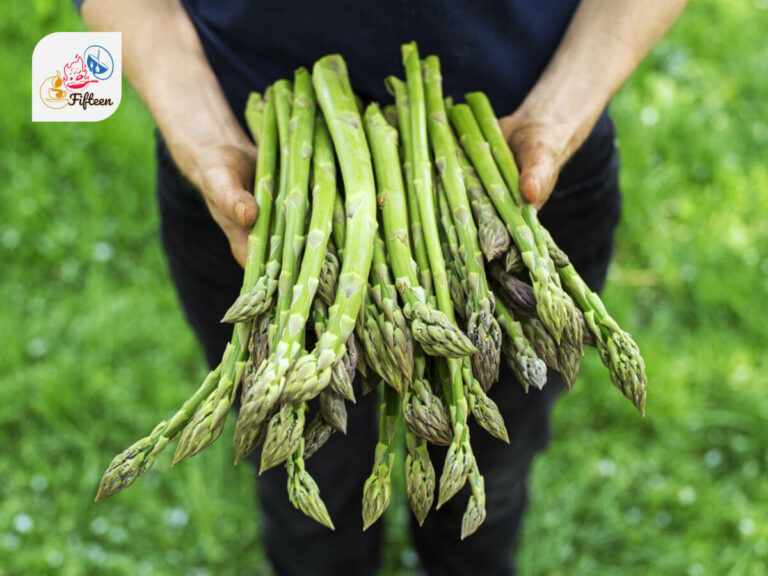
Asparagus
Asparagus is a perennial flowering plant whose young shoots are eaten as a spring vegetable.
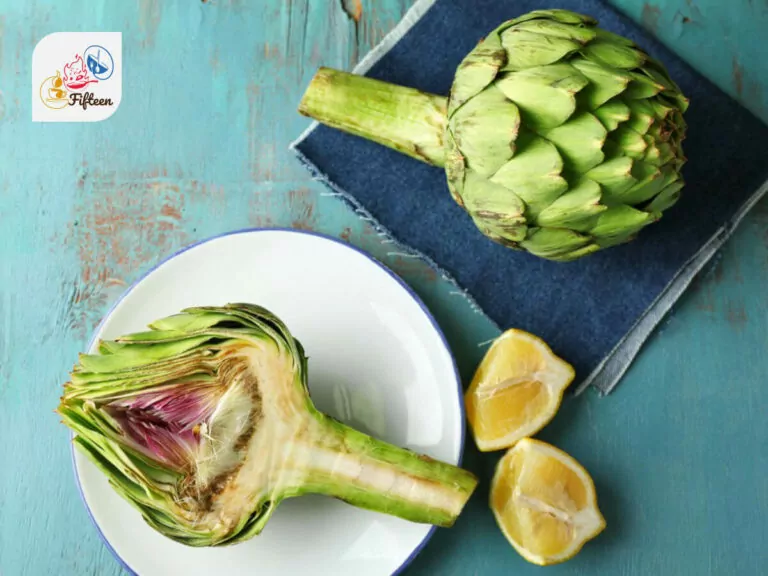
Artichoke
Artichoke is a thistle-like perennial plant cultivated for its edible flower buds.
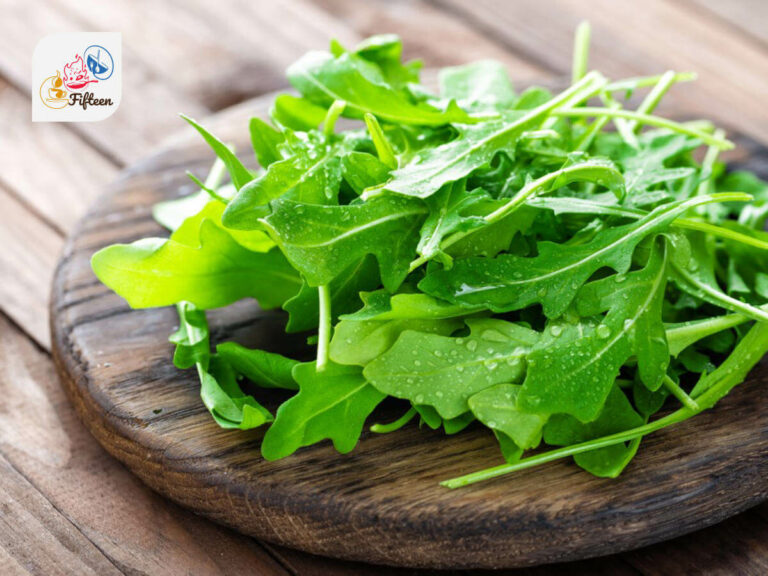
Arugula
Arugula, or rocket, is a leafy green plant with a peppery flavor and is used in salads.
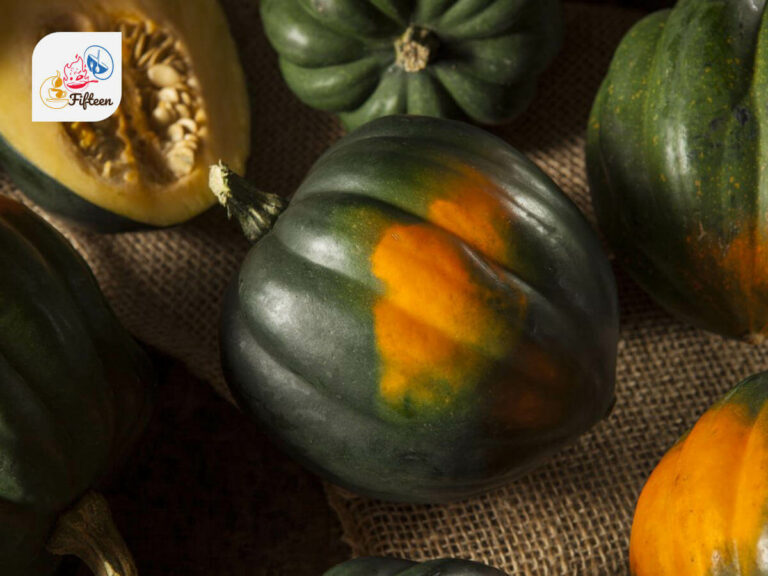
Acorn Squash
Acorn squash is a winter squash with distinctive longitudinal ridges and sweet, yellow-orange flesh.
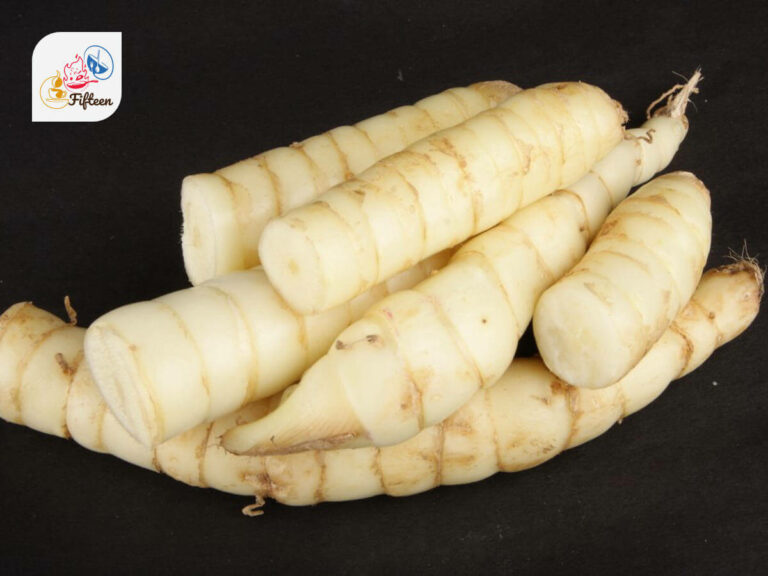
Arrowroot
Arrowroot is a tropical tuber native to Indonesia. It is known for its starch, extracted from the roots and used as a thickening agent.
Are you looking for your favorite veggies and didn’t find them on this list? No problem! Plenty more A-beginning vegetables are waiting for you to discover.
I hope you found what you read interesting! Spread the joy and share this with fellow fruit enthusiasts!
Got a fruit that starts with ‘A’ I haven’t covered? Let me know in the comments. And don’t stop here, explore more fruity wonders in articles starting with different letters, covering everything from A to Z!


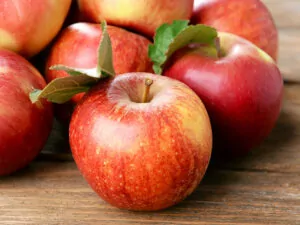
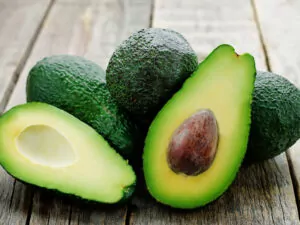

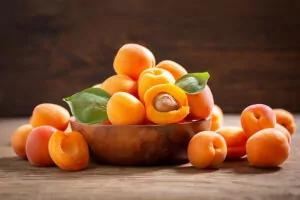
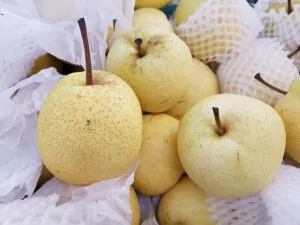
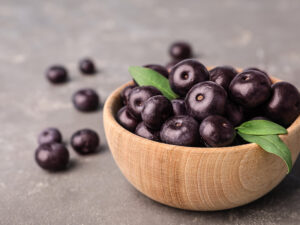
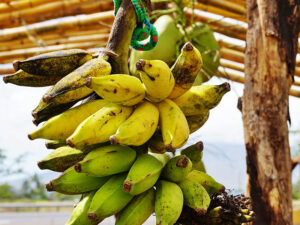
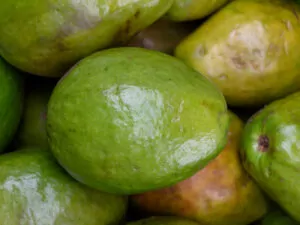
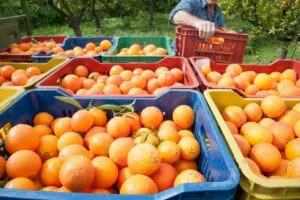

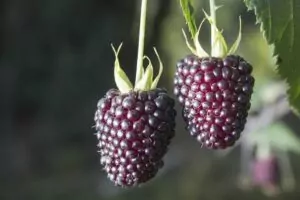
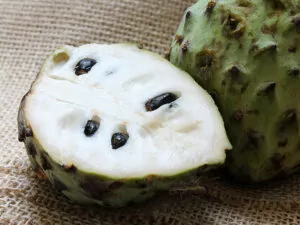
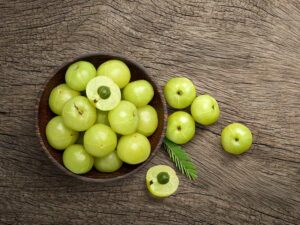
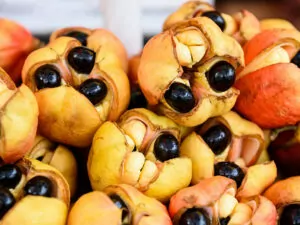
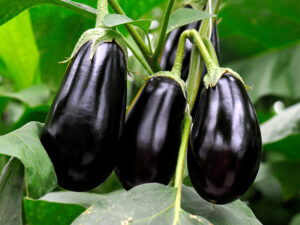

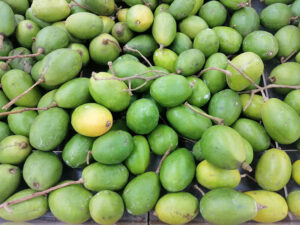
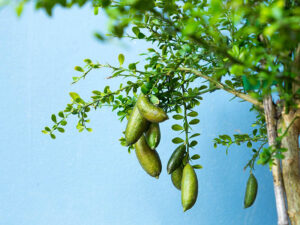
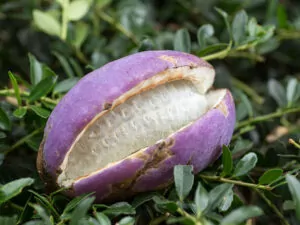
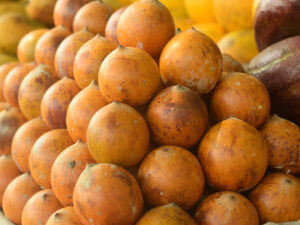
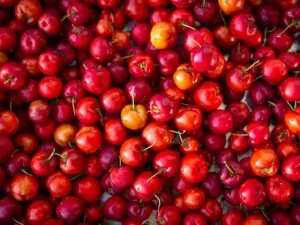
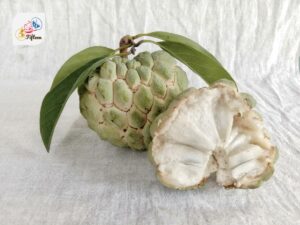
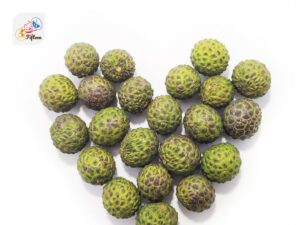
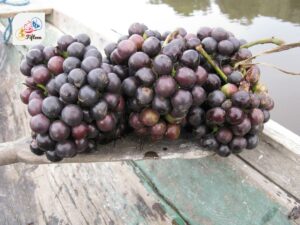
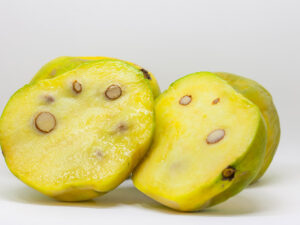
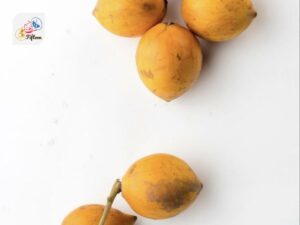
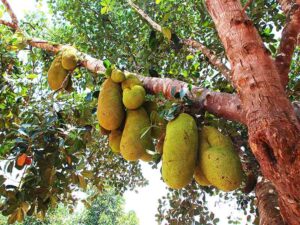
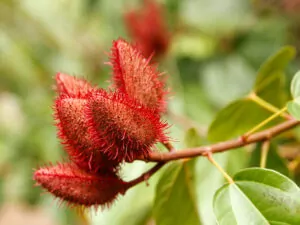
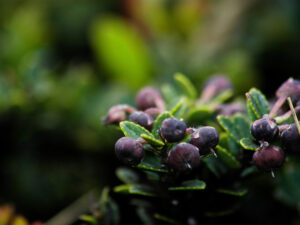
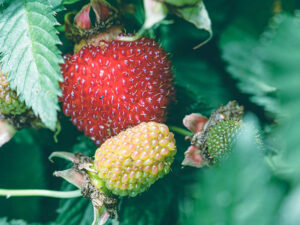
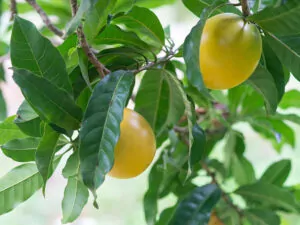
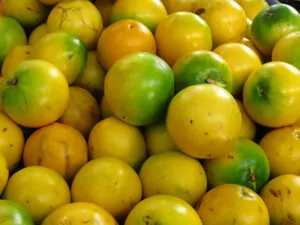
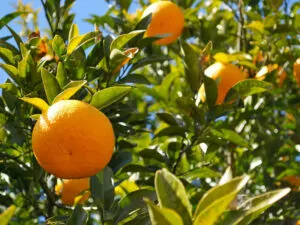
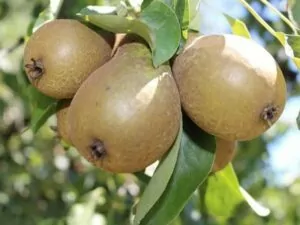
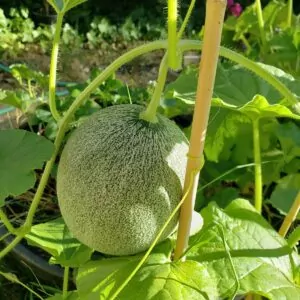
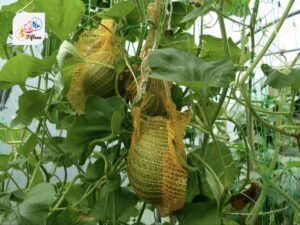
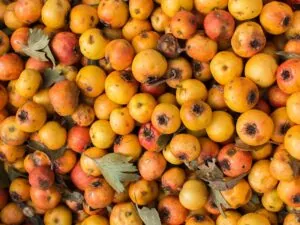
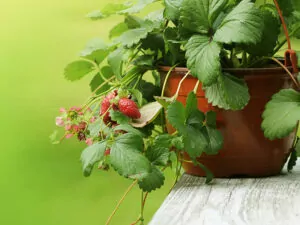
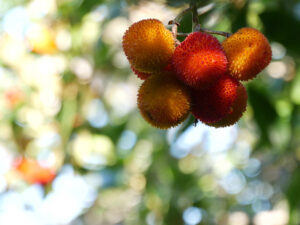
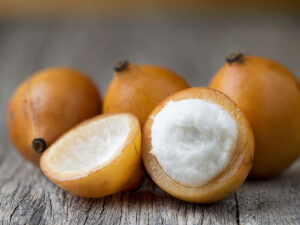
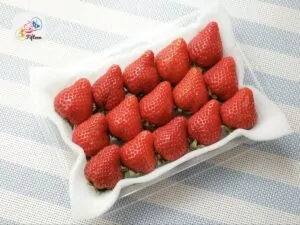
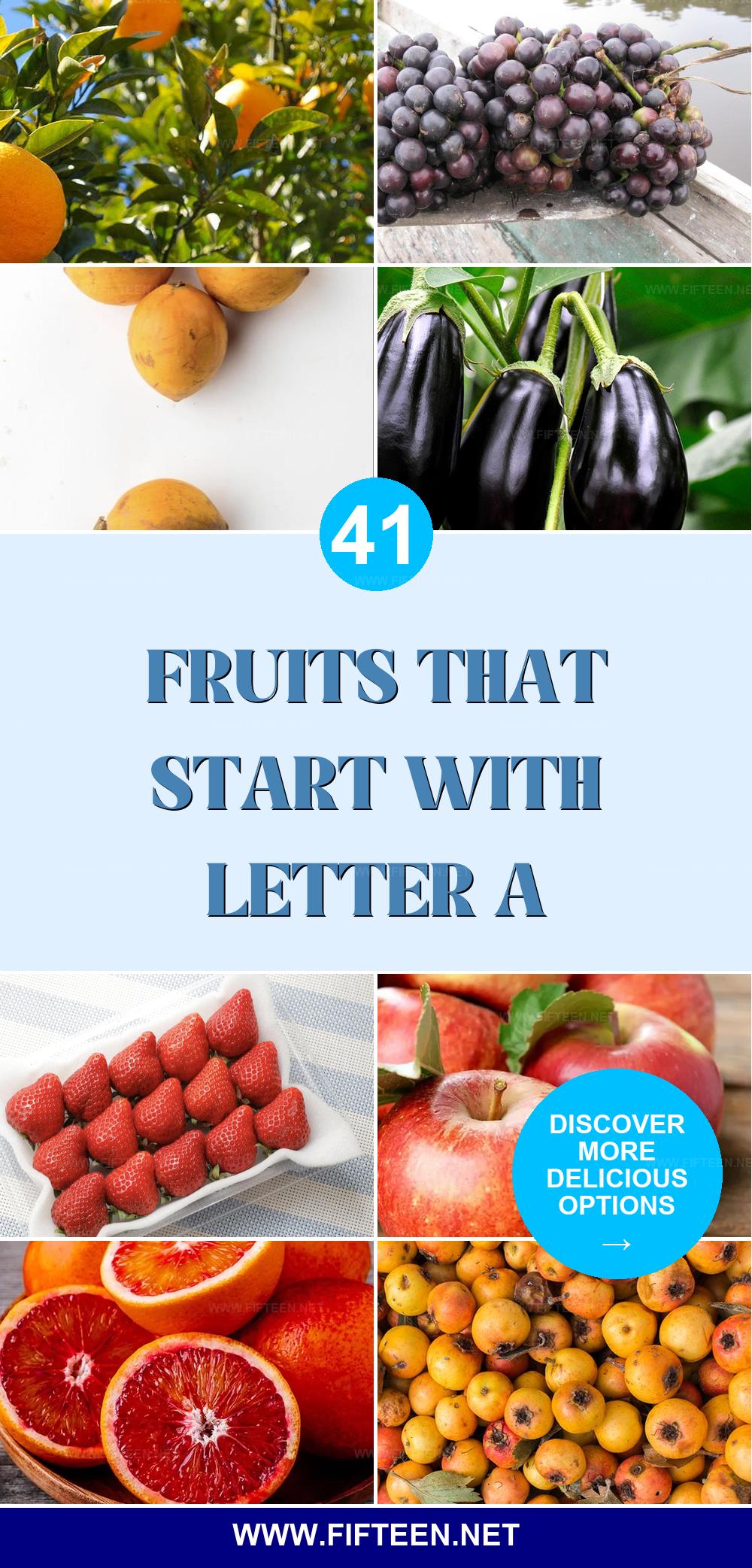
Jamie Scott
Editor in Chief, Senior Content Writer
Expertise
Home Cooking, Meal Planning, Recipe Development, Baking and Pastry, Food Editor, Cooking-video Maker, Western Food Evaluation Expert
Education
Le Cordon Bleu College of Culinary Arts
Local Community College, New York, NY
Jamie Scott is a skilled culinary expert and content creator specializing in Western cuisine. With over 15 years in the culinary field and formal training from Le Cordon Bleu, Paris, Jamie deeply understands how to blend nutrition with delicious flavors. His passion for cooking matches his commitment to making healthy eating accessible and enjoyable.
On Fifteen.net, Jamie brings a fresh perspective to classic dishes and beverages, offering readers insightful recipes, cooking tips, and a fresh view on meal planning that emphasizes taste, health, and simplicity.